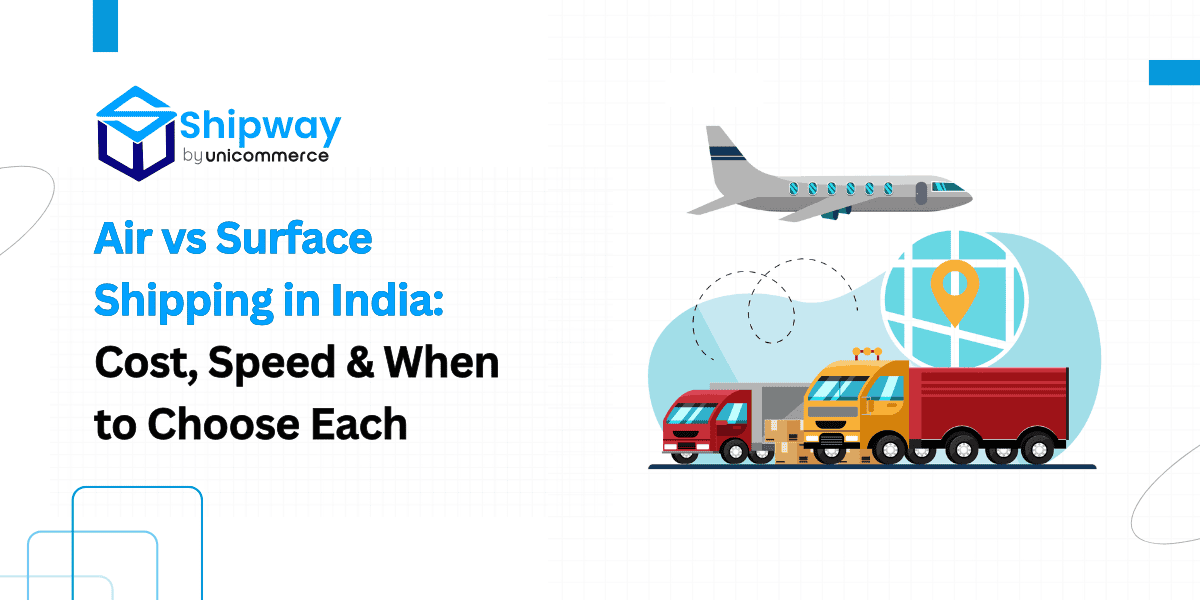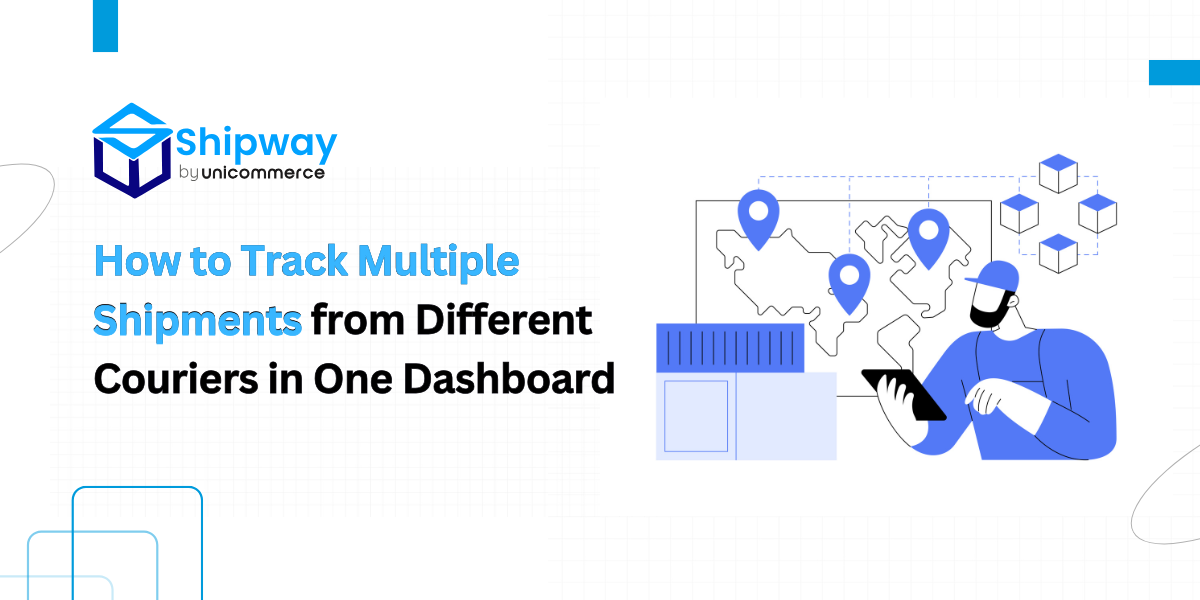Running an e-commerce business involves countless moving parts, but one of the most overlooked and often most frustrating tasks is paperwork. A single mistake in documentation can throw the entire supply chain into chaos, leading to shipment delays, misplaced goods, penalties, and unhappy customers. Even something as small as a wrong entry could send a product to the wrong buyer.
On top of this, businesses must deal with regulatory compliance requirements and avoid miscommunication between internal teams and 3PL partners. All of these factors make accurate documentation critical, and that’s where a shipping manifest comes into play.
In this blog, we’ll explain what a shipping manifest is, explore the common challenges businesses face while creating one, and break down the different types of shipping manifests you need to know.
What is a Shipping Manifest?
A shipping manifest is an official document that lists all the items included in a shipment. It provides detailed information such as item descriptions, product codes, quantities, weights, origin, and destination details. This document acts as both a shipping label and a legal record, ensuring accuracy, compliance with customs regulations, and smooth movement of goods through the supply chain.
Key Features and Benefits of a Shipping Manifest
A shipping manifest offers multiple operational, compliance, and tracking advantages that make the shipping process accurate and hassle-free. Here are some key features-:
Comprehensive Overview
Offers a complete summary of all goods being transported.
Customs Clearance
Helps customs officials verify shipments, enforce regulations, calculate duties, and prevent illegal trade.
Tracking & Transparency
Serves as a reference for logistics providers, ensuring goods are traceable at every stage.
Pick-Up & Delivery Accuracy
Contains sender and recipient details to streamline movement and avoid delivery errors.
Billing & Invoicing Support
Facilitates faster invoice generation for both customers and suppliers.
Risk Management Tool
Acts as proof in case of disputes, damages, or loss, making it essential for insurance claims.
For example, imagine an e-commerce brand shipping multiple customer orders from its fulfillment center. In this shipping manifest, the document would list detailed information such as product SKUs, item descriptions, quantities, weights, and delivery addresses. As the orders move through courier hubs and last-mile delivery partners, the manifest helps logistics staff verify packages, ensure accuracy in dispatch, and prevent mix-ups. At the same time, the e-commerce brand’s operations team can use the manifest to update order statuses in real time and maintain accurate inventory records across platforms.
Types of Shipping Manifests
1. Cargo Manifest
A cargo manifest is a detailed shipping document that lists everything being transported on a vessel or aircraft. It includes product names, codes, quantities, total weight, volume, packaging information, and the details of both the sender and receiver. Nothing is left out, every package is recorded so that there’s full visibility into what the carrier is moving.
Key Difference:
Unlike other manifests, a cargo manifest is specific to goods shipped via sea or air routes.
When It’s Used:
An electronics brand shipping bulk consignments of smartphones from China to the Middle East can use a cargo manifest to ensure customs officials have full visibility into product models, IMEI numbers, and quantities, enabling smoother clearance and accurate handling at the destination port.
Key Difference: Unlike other manifests, a freight manifest exclusively covers land-based transportation.
When It’s Used:
An FMCG company transporting packaged beverages across different cities by truck uses a freight manifest to record product SKUs, quantities, and delivery points. This ensures the driver follows the optimized route, each retail outlet receives the correct load, and proof of delivery is maintained for reconciliation.
2. Export Manifest
An export manifest is prepared for shipments that are being sent out of a country to international buyers. It lists important details such as product descriptions, quantities, weight, and accompanying export documentation. This record helps authorities check shipments before departure, confirm that regulations are being followed, and streamline the customs clearance process.
Key Difference: Unlike other manifests, an export manifest is designed specifically for outbound international shipments.
When It’s Used:
A garment manufacturer in India exporting apparel to a retailer in Europe prepares an export manifest listing each product category, quantities, HS codes, and supporting export declarations. This document ensures customs officials at the port can verify the shipment, confirm compliance with international trade regulations, and allow smooth clearance for onward shipping.
3. Import Manifest
An import manifest records goods entering a country from international sources. It contains product descriptions, quantities, and import declarations to help customs officials verify shipments, calculate duties, and approve entry.
4. Freight Manifest
A freight manifest is a document prepared for goods moved by road or rail. It captures details like product names, quantities, weight, and delivery points, giving carriers a clear picture of what is being transported. This helps drivers and logistics teams plan routes effectively, balance loads, and confirm that deliveries match the documentation.
Key Difference: Unlike export manifests, import manifests apply only to inbound international shipments.
When It’s Used:
An electronics retailer in India importing a bulk consignment of smartphones prepares an import manifest with product models, IMEI details, and quantities. Customs officials at the port verify the manifest to calculate duties, ensure compliance with regulations, and release the shipment for distribution across retail outlets.
5. Hazardous Material Manifest (Dangerous Cargo Manifest)
A hazardous material manifest is mandatory for shipments carrying dangerous goods such as chemicals, gases, or flammable materials. It includes detailed information about the cargo, packaging standards, handling procedures, and emergency response instructions to ensure safety.
Key Difference: Unlike other manifests, this one is strictly for hazardous cargo and prioritizes compliance and safe handling.
When It’s Used:
A chemical manufacturer shipping industrial solvents prepares a hazardous material manifest to document handling instructions and ensure compliance with safety regulations during transit.
6.Out-of-Gauge Manifest
An out-of-gauge (OOG) manifest covers shipments that exceed standard size or weight limits, often referred to as oversized or overweight cargo. It specifies dimensions, weight, and special handling requirements, helping logistics teams plan permits, arrange special equipment, and ensure safe delivery.
Key Difference: Unlike standard manifests, this one applies only to non-standard or oversized shipments.
When It’s Used:
Companies transporting heavy machinery, construction equipment, or large structures rely on OOG manifests for compliant and secure movement of cargo.
7. Reefer Manifest
A reefer manifest is used for temperature-sensitive goods such as pharmaceuticals, fresh produce, or frozen foods. It includes product details, temperature requirements, and handling instructions to ensure product integrity during transit.
Key Difference: Unlike other manifests, a reefer manifest specifically supports cold-chain or temperature-controlled shipments.
When It’s Used:
A dairy brand shipping cartons of yogurt uses a reefer manifest to specify temperature settings and handling guidelines, ensuring the products remain fresh and safe until they reach retail stores.
Common Challenges in Shipping Manifest Creation and Solutions
Creating an accurate and compliant shipping manifest is not always straightforward. Errors or oversights can lead to delays, penalties, or dissatisfied customers. Here are the most common challenges businesses face, and how to address them effectively:
1.Inaccurate Inventory Data
If inventory levels are outdated or inaccurate, manifests may include incorrect product details or quantities, resulting in shipment errors. These mistakes not only cause delivery issues but also impact customer trust.
Solution: Use fulfillment software integrated with inventory management systems. Real-time stock visibility ensures the manifest reflects accurate data, reducing errors and improving order accuracy.
2. Manual Entries and Human Errors
Manually entering details such as product codes, quantities, and addresses increases the risk of omissions and discrepancies. Such errors can delay shipments and increase costs for corrections.
Solution: Automate manifest creation with software that pulls data directly from order management systems. Predefined templates and automation reduce manual work, minimize errors, and save time.
3. Compliance Issues
Carriers, customs, and regulators often require specific formats, labels, or documentation. Non-compliance can result in shipment delays, fines, or even confiscation of goods.
Solution: Fulfillment software can automatically generate compliant shipping labels and documents for each carrier and region. Standardized workflows reduce the risk of non-compliance and keep shipments moving smoothly.
4.Managing Different Requirements
Retailers, suppliers, and carriers may all have unique requirements for shipping manifests. 3PLs handling multiple clients face even greater complexity in maintaining consistency.
Solution: Use customizable manifest templates and flexible workflows. Fulfillment platforms allow tailoring manifests to individual client or carrier needs, ensuring accuracy without extra manual effort.
5. Discrepancies Between Manifest and Actual Consignment
Mismatches between what’s written in the manifest and what is physically shipped often stem from clerical errors or miscommunication during packing. These discrepancies delay clearance and create disputes.
Solution: Introduce checkpoints across packing and dispatch stages, supported by scanning systems or automation, to ensure manifests align with the actual shipment.
6. Coordinating Multiple Carriers and Transportation Modes
When shipments involve multiple carriers (air, sea, or land) and varying processes, managing manifests becomes highly complex.
Solution: A centralized fulfillment system with carrier integrations simplifies the process by automating carrier selection, consolidating documentation, and tracking charges and shipments in one place.
7. Language Barriers and Communication Gaps
International shipments often encounter language barriers or delays in transmitting manifests, creating confusion and slowing down customs clearance.
Solution: Standardize manifests in widely accepted formats and use software that provides real-time updates and automated notifications to carriers and clients. Proactive alerts ensure clear communication and faster issue resolution.
8. Amending Submitted Manifests
Once a manifest is filed and the shipment is in transit, amendments can be difficult and costly, often leading to penalties.
Solution: Build in multiple review stages before submission to ensure accuracy the first time. Automated systems reduce the likelihood of mistakes that require costly amendments.
Final Say
Shipping manifests play a critical role in keeping logistics operations accurate, compliant, and hassle-free. From customs clearance to ensuring the right goods reach the right customer, even a small error can create costly delays. That’s why businesses need automation to simplify and standardize the process.
With Shipway, you can generate bulk invoices and manifests automatically, making documentation faster, error-free, and fully compliant. By streamlining these crucial tasks along with other logistics workflows, Shipway enables brands and 3PLs to reduce operational bottlenecks and deliver a smoother, more reliable customer experience.




